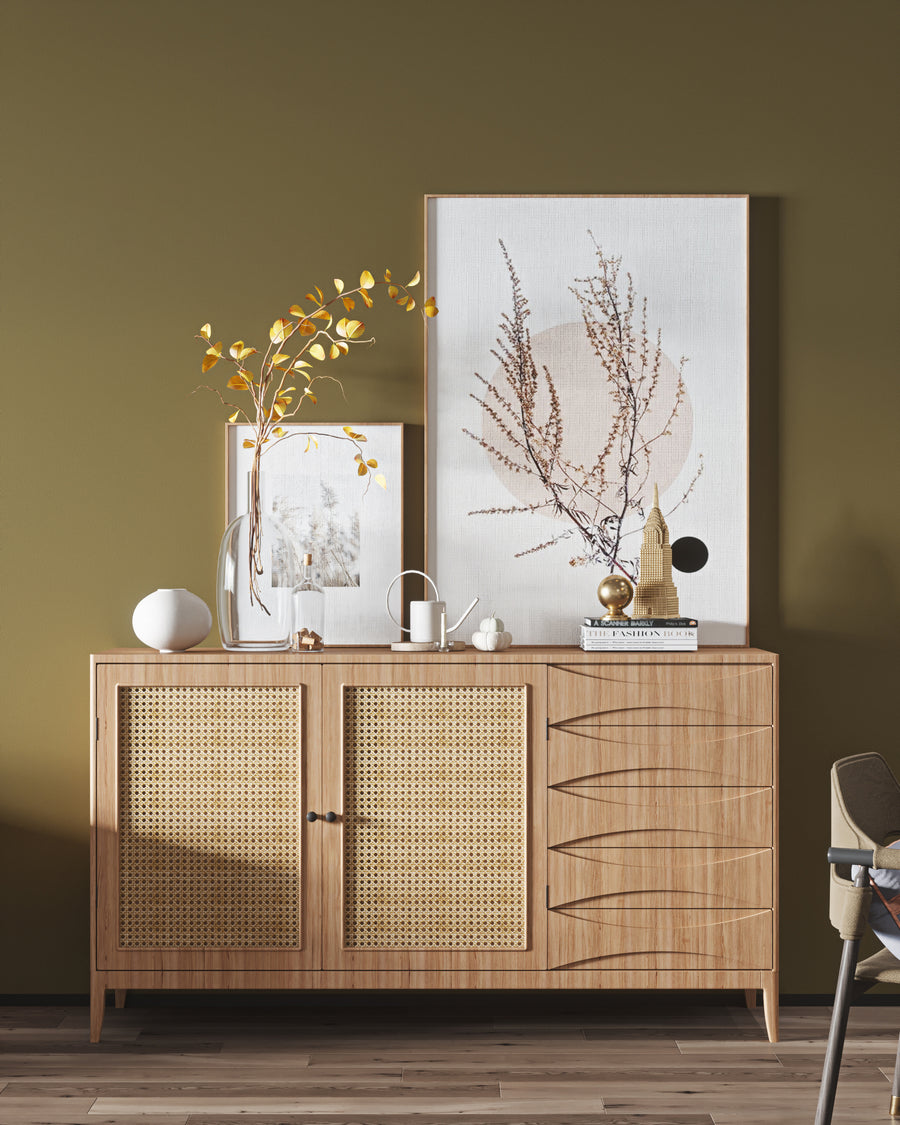Lighting Design for Hospitality Venues
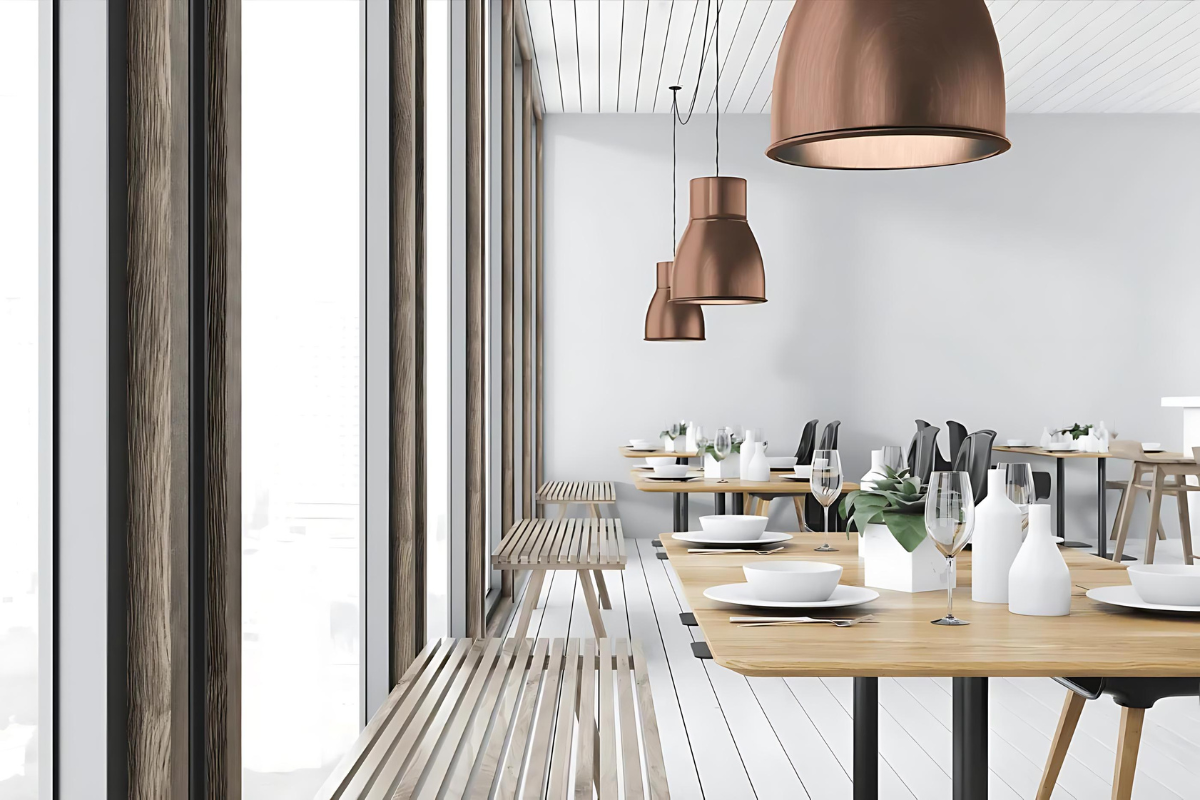
When it comes to designing the interior of a hospitality venue it is important to create a sensory experience that your customers will want to return to. Lighting plays a huge role in setting the overall tone and mood of your business.
Consider the type of customers you want to attract and what their expectations might be. Whether you’re opening a cozy cafe or fine dining restaurant, lighting will always be a big factor in determining your customer’s overall experience of your business. Keep reading to find out how you can select the right lighting to suit your business goals.
A Cozy Cafe Where Customers Can Work and Study
In most cafes in 2022, people are looking for a brightly lit space to meet friends, read, or grab a coffee before work. Especially since the boom in working remotely, many people choose to bring their laptop and complete online work in the cozy and quiet atmosphere of their local cafe. Since cafes are generally open in the morning to early afternoon, it is best to take advantage of the natural sunlight by placing customer tables near windows.
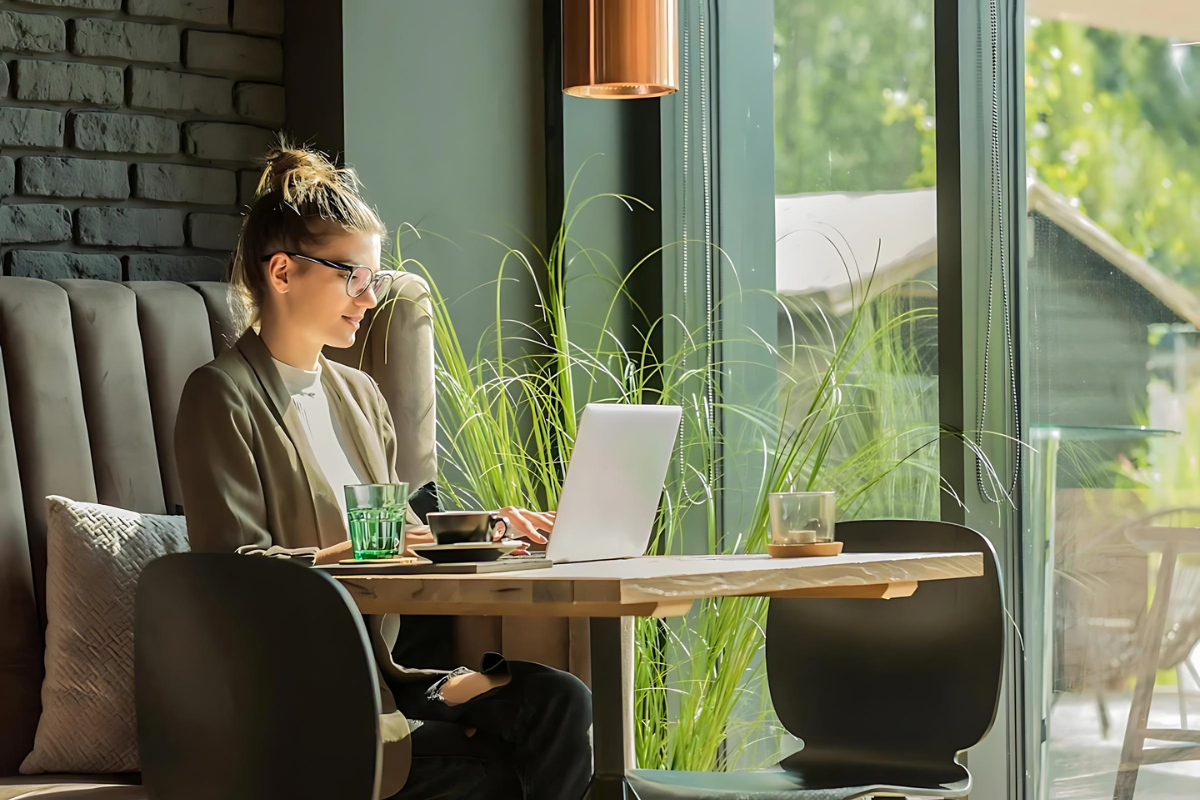
Low intensity supplementary lighting can also be used to complement the natural sunlight, or add further brightness so that customers can read, study, or work while having their coffee. For this application, low glare light fixtures and a cool white colour temperature are ideal. Low glare lighting can be achieved with recessed downlights, where the light source is hidden in the ceiling. Baffle trims and black trim recessed downlights also absorb excess light, and can be used to achieve non-intrusive lighting.
To add more personality to your lighting design, consider using decorative pendant lighting. For a rustic feel, select pendants with timber or concrete materials. For a clean and minimalist look, install glass pendant lights. Or opt for pendants with a metal rod or chain suspension for an industrial feel. These styles are currently trending for minimalist cafes and hospitality venues.
A Casual Bar for After-Work Drinks
Bars often use a soft glow of light to create an ambient atmosphere where customers can relax and unwind after work. In these venues, it is important that lighting is non-intrusive, meaning that they are not harsh on the eyes.
Many bars use pendant fixtures with a singular exposed globe, with the yellow LED filaments creating beautiful linear designs. In outdoor or rooftop bars, string lights can provide a comfortable and whimsical feel, with a small output of ambient light. Select a colour temperature of 2700K for extra warm lighting, which is lower in intensity as compared to cool white or daylight globes.
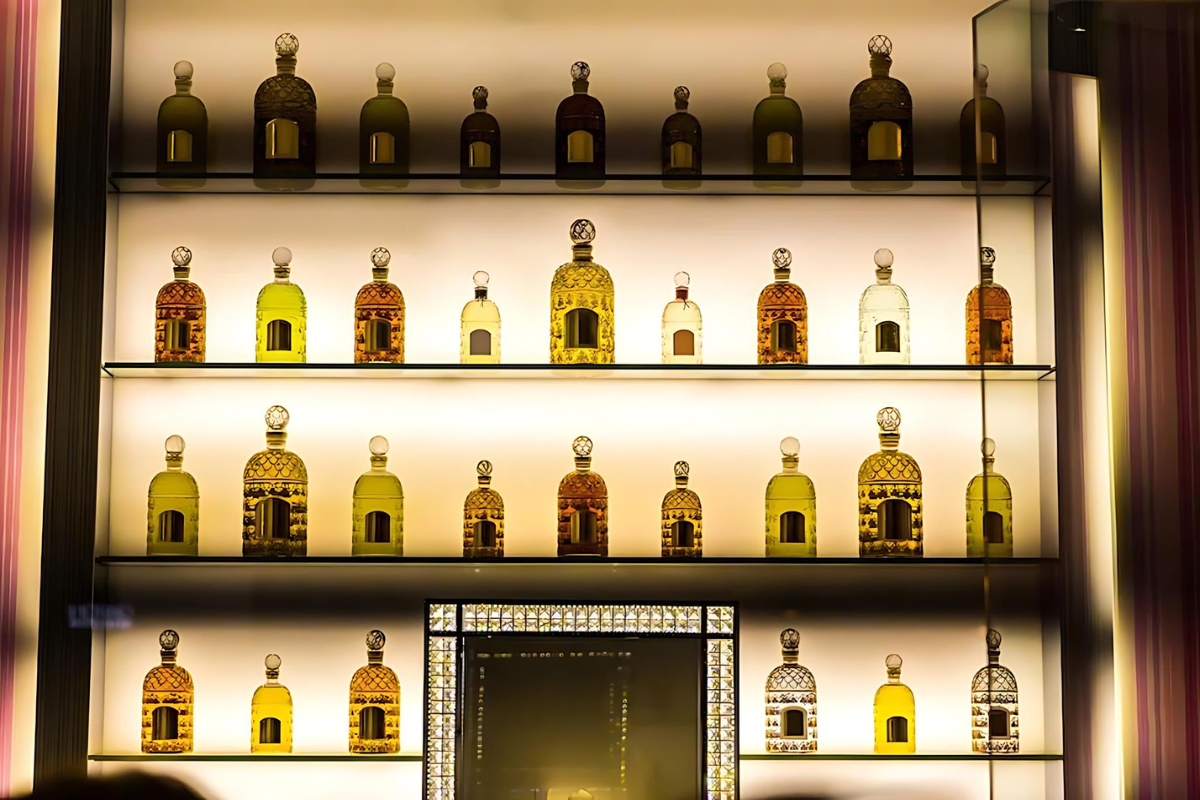
Installing dimmers is a great way to control the intensity of light, allowing bar owners to reduce the brightness of light to create a more relaxed atmosphere for patrons. Dimmable lighting is also a great way to save energy and reduce electricity costs.
Many bars also use lighting to highlight the premium wines and spirits on the wall behind the bar. Striplights or small cabinet lights can be installed on the display shelves to achieve this effect.
An Energetic and Dynamic Pub
Pub-goers often expect a lively atmosphere where they can catch up with friends, enjoy watching a sports match, or play a game of pool. When designing the interior of a pub, it is important to add dimension by using layered lighting. By using layers of ambient and decorative lighting, you can create a dynamic space that patrons are likely to return to.
Ambient lighting provides enough light for waiters and staff members to carry out tasks in hallways, passageways, and service areas. To achieve ambient lighting in a pub, basic ceiling light fixtures such as downlights, flush mounts, and batten fix lights can be used.
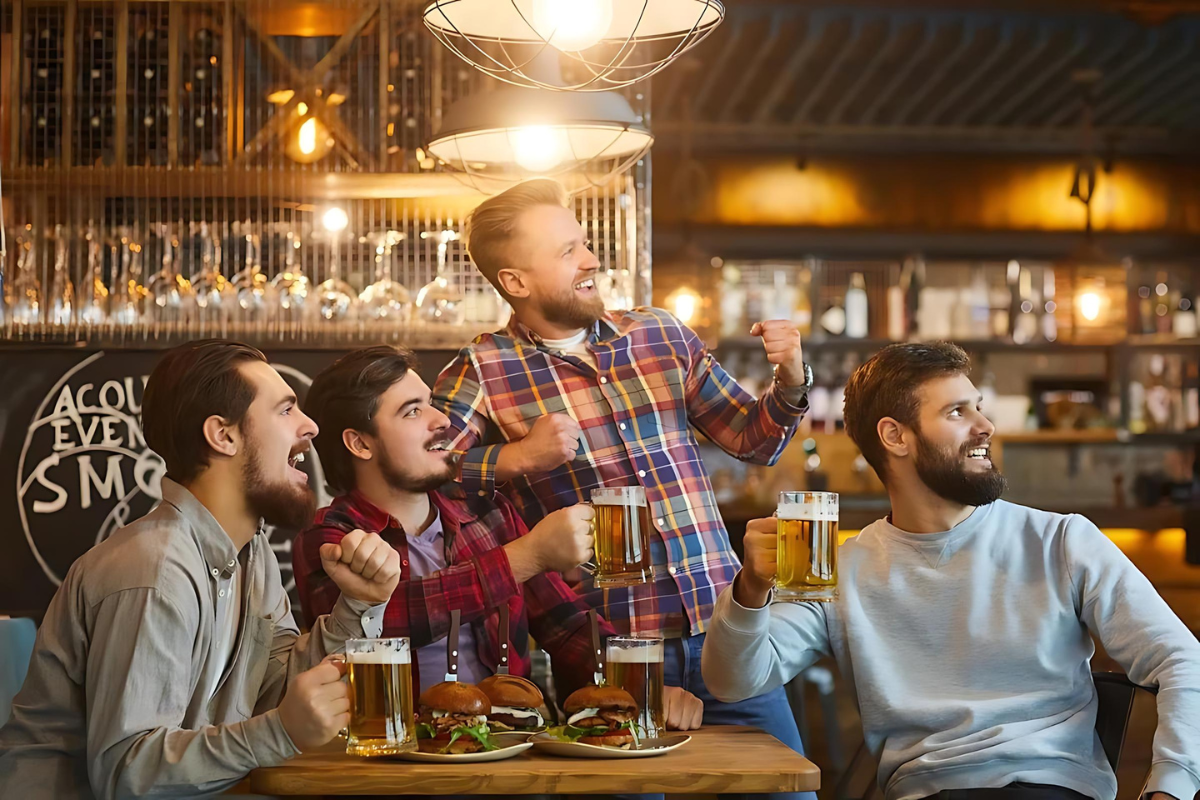
Accent lighting is used to highlight specific features of a hospitality environment such as award displays, artwork, or architectural details. This can be achieved with gimbal downlights or track lights that can be angled as needed. Make sure accent lights are 3 times brighter than the surrounding ambient light to achieve the desired effect.
Decorative lighting provides enough light for customers to read a menu or engage in pub activities like trivia and pool, while adding a sense of style and flair. Ipubs, the most common types of decorative lighting are singular pendant lights or wall brackets.
A Fine Dining Restaurant
In fine-dining restaurants, customers generally expect a tasteful interior with an intimate environment suitable for a romantic dinner or a business meeting. This can be achieved easily by using single pendants or deep recessed downlights to create narrow pools of light, landing directly on restaurant tables. This simple lighting technique allows you to create a feeling of intimacy for customers, as well as a sophisticated interior design without breaking the bank.
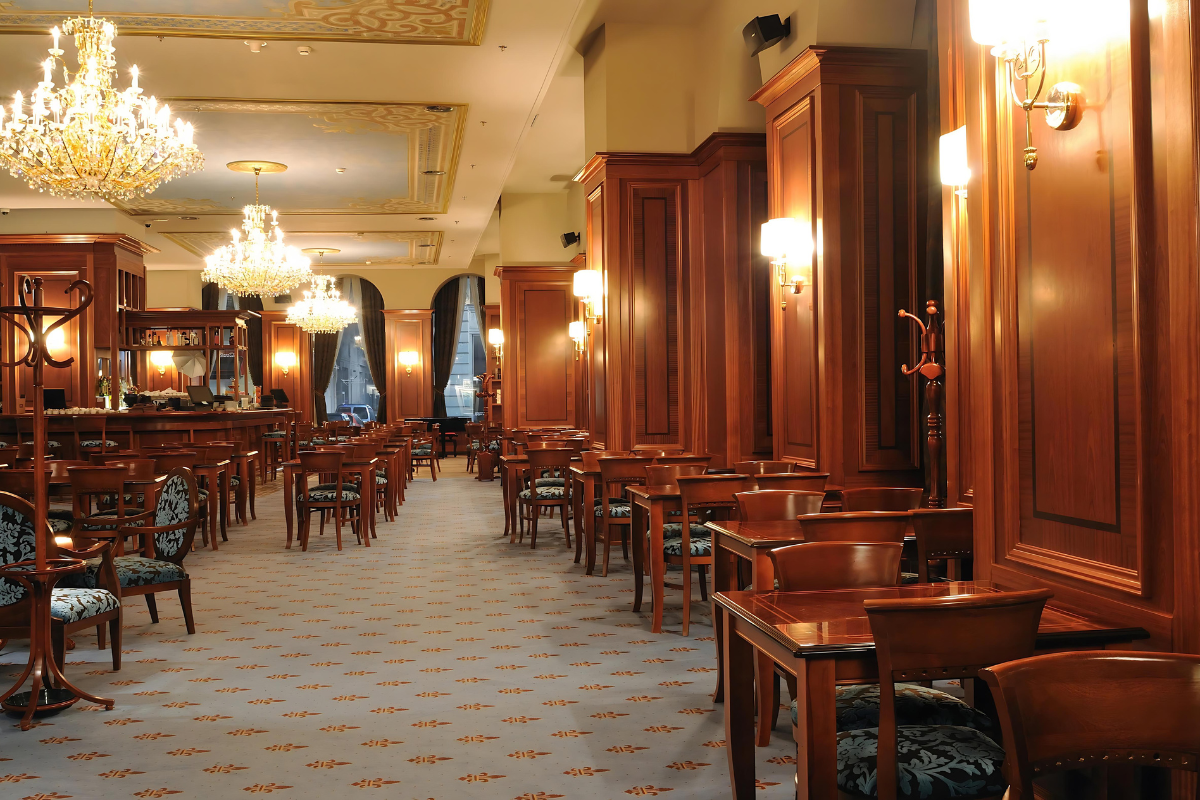
Indirect lighting is also a great way to create a sophisticated interior design. As opposed to direct lighting such as downlights or oyster lights which shine light directly towards patrons, indirect lighting shines the light upwards and reflects off ceilings or walls to spread gently across the room. This effect can be achieved with upshining glass chandeliers and wall brackets.
It is also important to improve the appearance of food and drinks by using lighting with a high CRI (colour rendering index). A light’s CRI measures its accuracy in reflecting colours in the room. In most hospitality venues, a CRI of 80 or more is preferable to optimise the presentation of dishes and intrigue customers.
Final Thought
At the end of the day, it is important that the lighting design of any commercial space reflects the brand’s vision. Consider the type of experience you want your customers to have, and how you can create an inviting atmosphere that customers will want to revisit.


